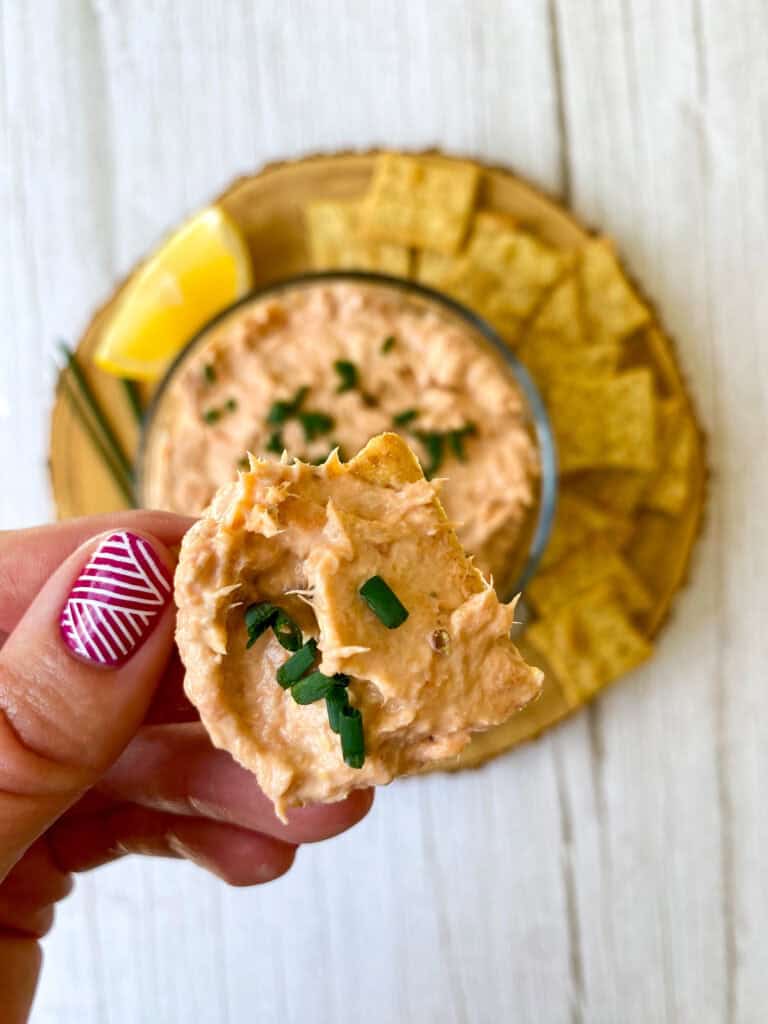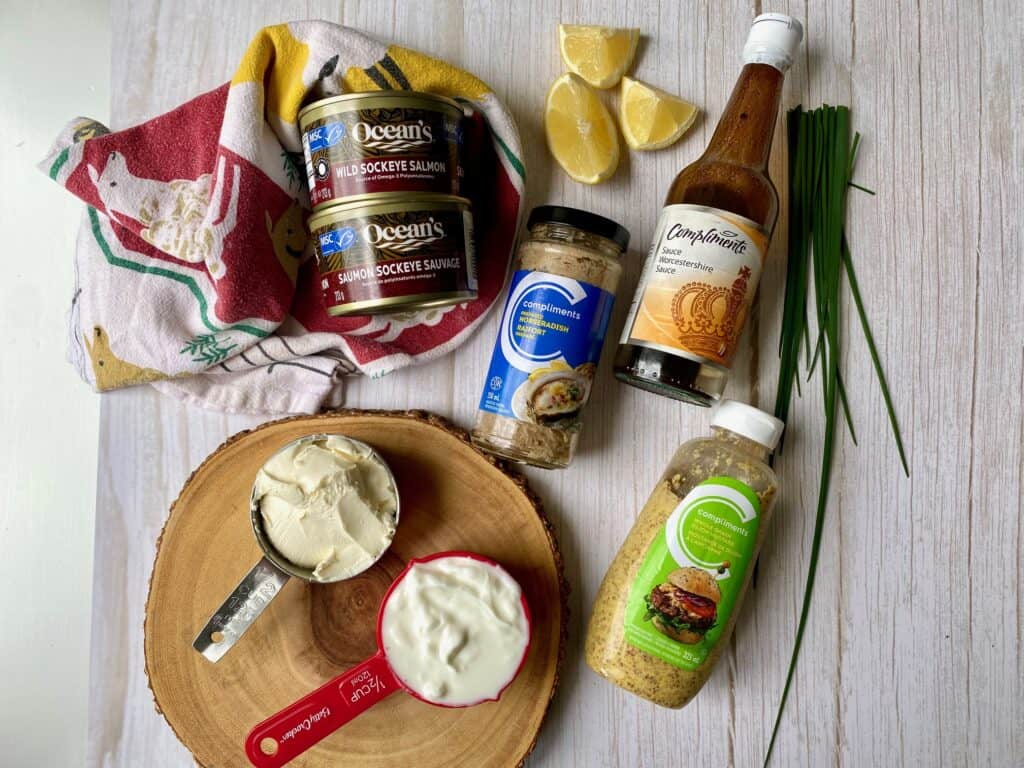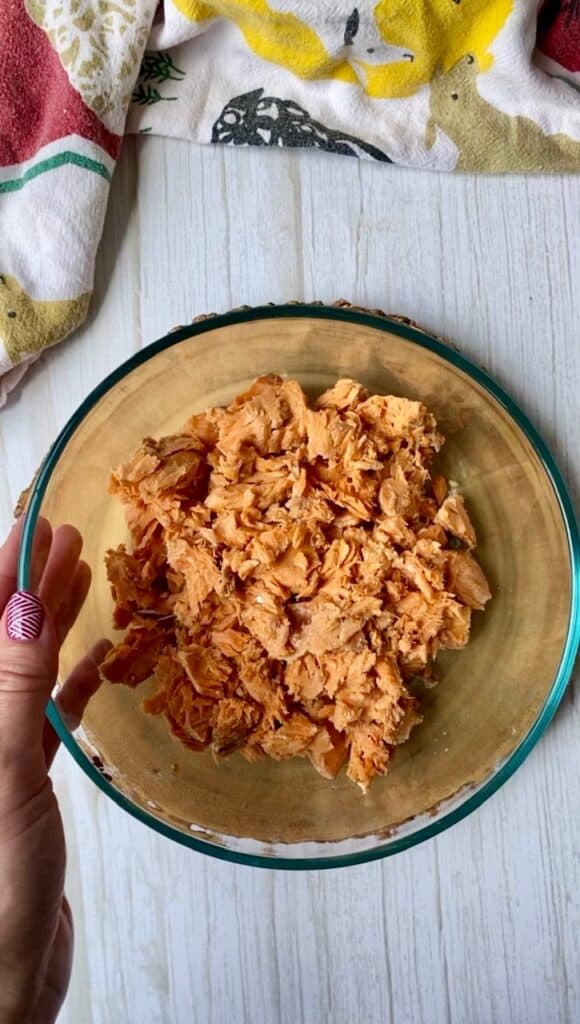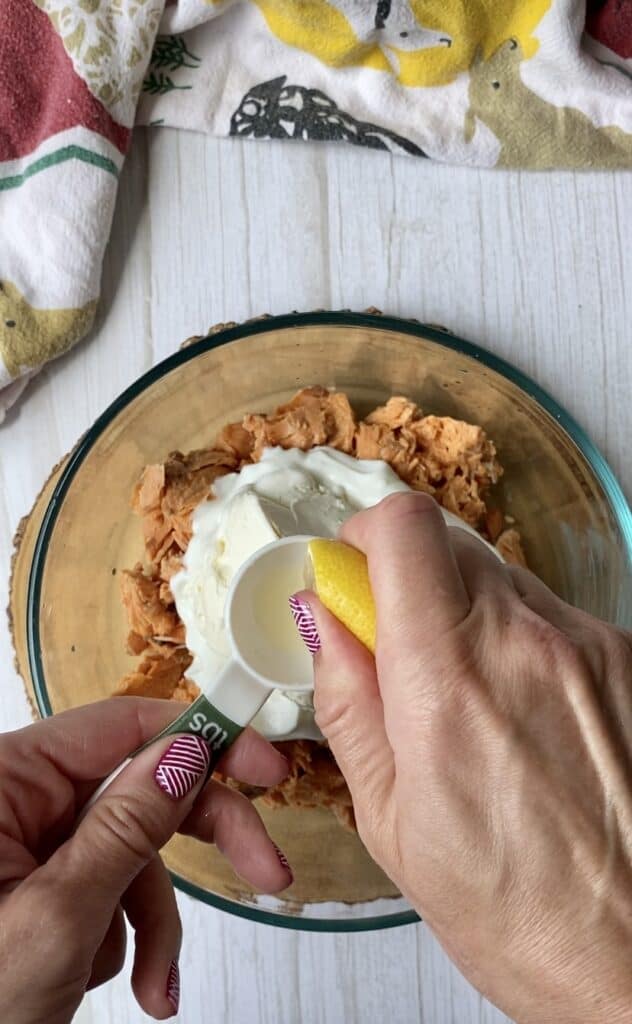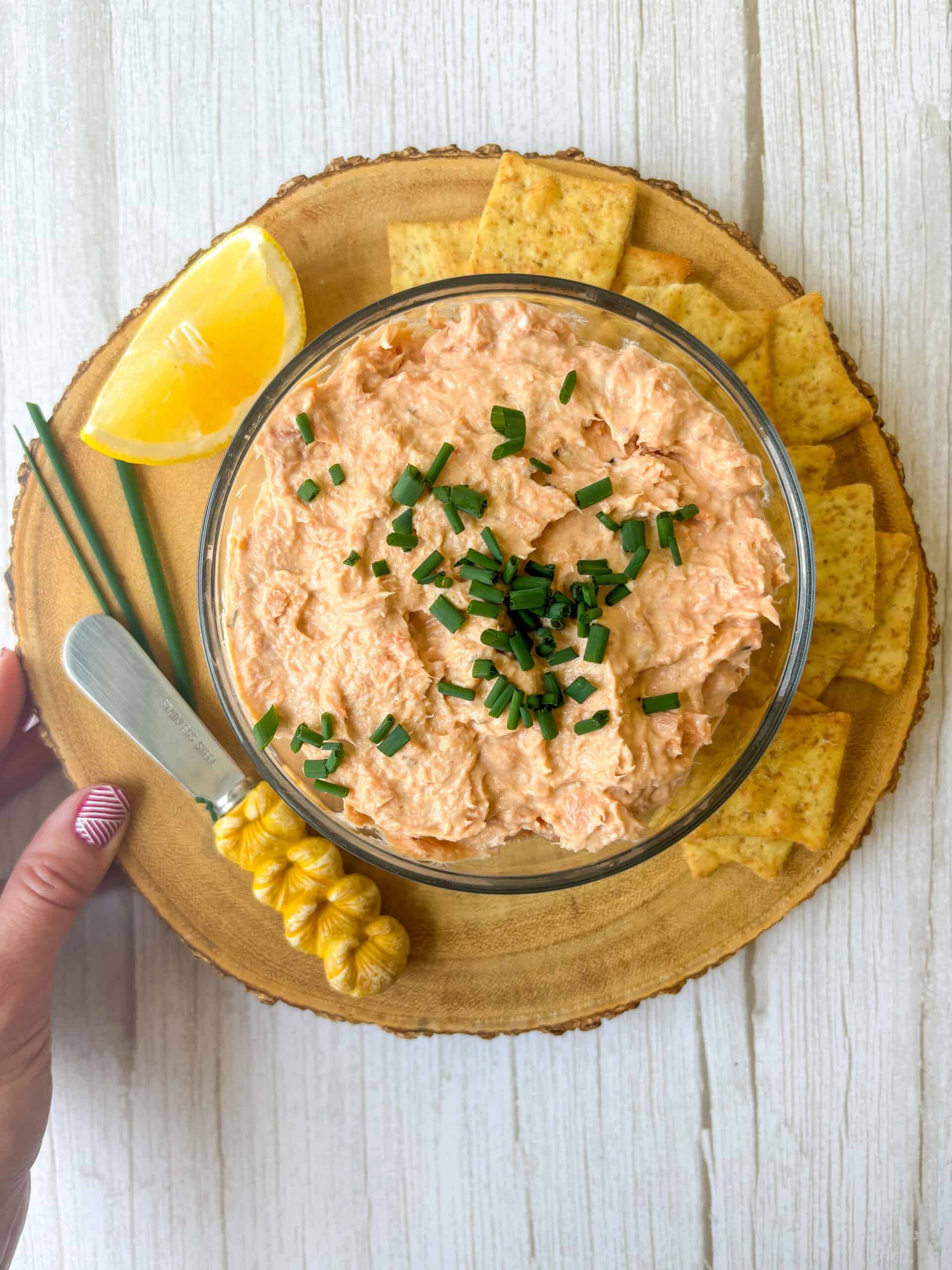
Salmon Pate
Salmon Pate is a simply flavourful appetizer, snack or part of a balanced meal. Undoubtedly, the richness from the cream cheese balances the tartness from the Greek yogurt delightfully. This quick-to-prepare recipe is ideal to make-ahead for family gatherings or holiday parties.
You’re sure to devour this salmon pate!
Salmon Pate finally has its rightful place on our household appetizer, snack and lunch menu. As a busy, dietitian mom, I’m always looking for simple ways to prep-ahead and improve family nutrition. Therefore, incorporating omega-3-rich foods is a definite goal since an estimated 40% of Canadians are not meeting the recommended requirement of these anti-inflammatory fats, putting them at increased risk for heart disease (Statistics Canada). Read on for omega-3 benefits as well as step-by-step instructions for this simply delicious Salmon Pate.
Why You’ll Love Salmon Pate:
- Delicious, easy crowd-pleaser for entertaining, bringing to potlucks or for busy weeknights.
- Easy-to-make and you can invite kids in the kitchen for building valuable food skills.
- Can prep-ahead and store in the fridge for four days or freezer for up to two months.
- Nutritious protein and omega-3-rich dip.
- Customizable for accompanying ingredients like crackers, veggies, pitas, pretzels and more.
- Versatile – can be served as a snack, appetizer or part of lunch.
- Kid-friendly meal addition. My toddler daughter loves this Salmon Pate recipe!
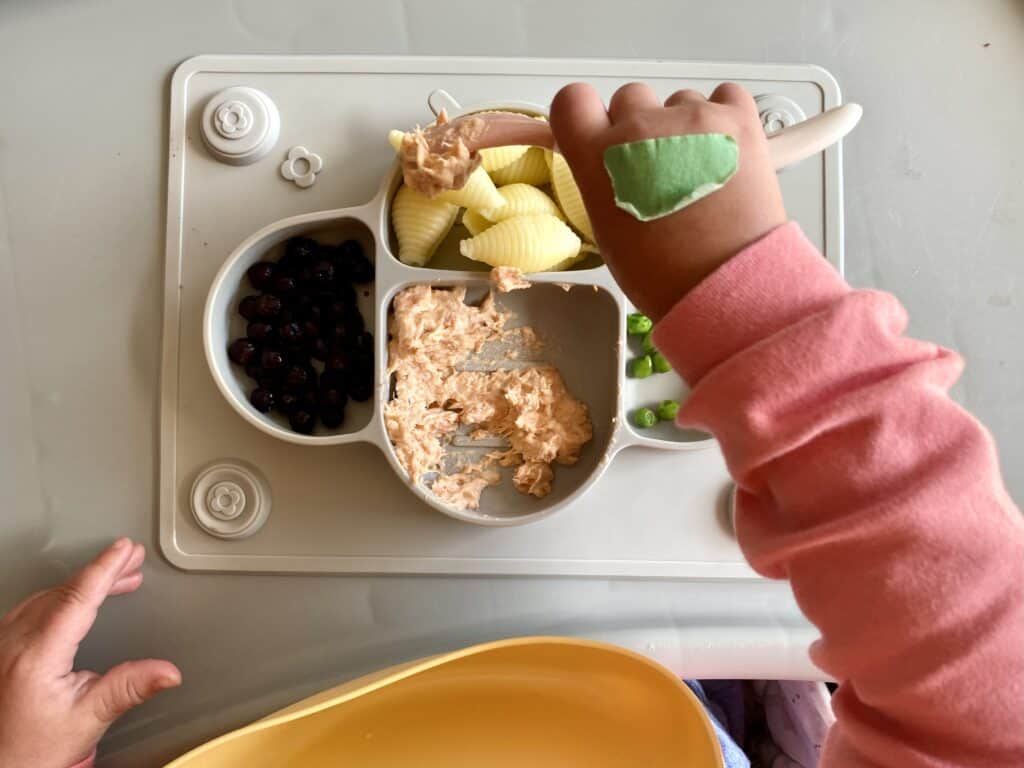
My 1.5-year-old daughter loves fish and I love encouraging omega-3-rich foods.
Here’s what you’ll need to make Salmon Pate:
Here are all the Salmon Pate ingredients. See recipe card for measurements.
Canned Salmon – I love having canned salmon as a pantry staple. Additionally, you can buy canned varieties with or without the bones. I remove large bones and smash the smaller ones up for added calcium.
Greek or Skyr or Lactose Free Yogurt – Choose plain variety (no sugar added) and your preferred percent milk fat (MF). I tend to go for 0% or 2% MF.
Cream Cheese – Ensure room temperature for easier mixing. Choose your preferred fat. I used the light cream cheese for this recipe.
Lemon Juice – Freshly squeezed lemon adds a beautiful brightness with the salmon.
Horseradish – Adds a nice flavour for added zippiness and is not overpowering. My 1.5-year-old loves this tastiness so don’t shy away from adding flavour.
Dijon Mustard – Use grainy or regular varieties.
Worcestershire Sauce – I like the sweet and savoury flavours with this addition.
Kosher Salt and Pepper – Add at the end to your taste preference.
Foodie Dietitian Tip: Always taste test your recipe BEFORE serving. This allows you to adjust seasonings like salt and pepper and acid (lemon) to suit your preference.
How do you make Salmon Pate?
To make my Salmon Pate, follow these steps:
- First, drain canned salmon. Remove skin and large bones. Place in a medium-sized glass bowl.
2. Next, add Greek yogurt and room temperature cream cheese to the salmon.


3. Then, add all remaining ingredients (see recipe card below for measurements).
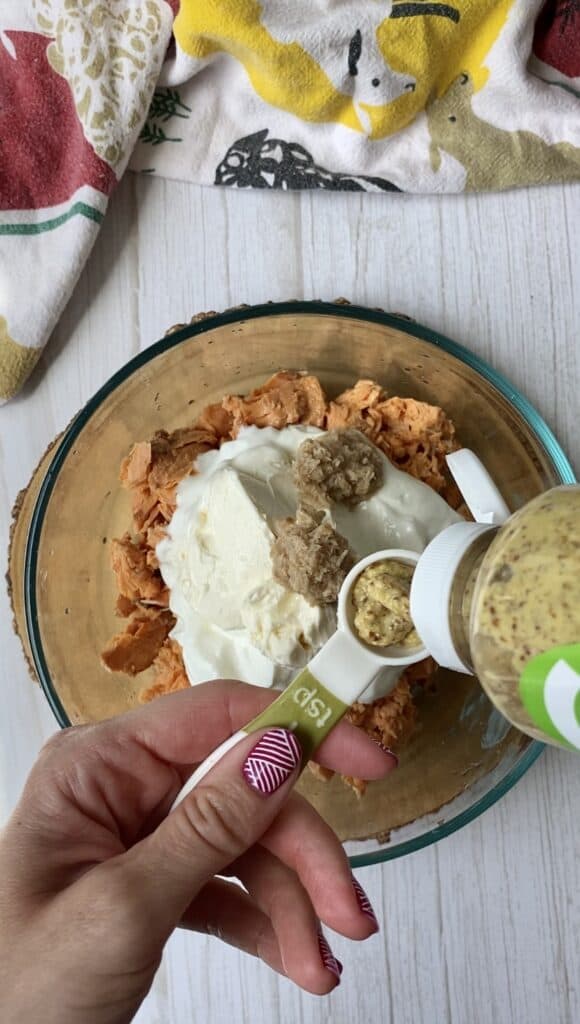
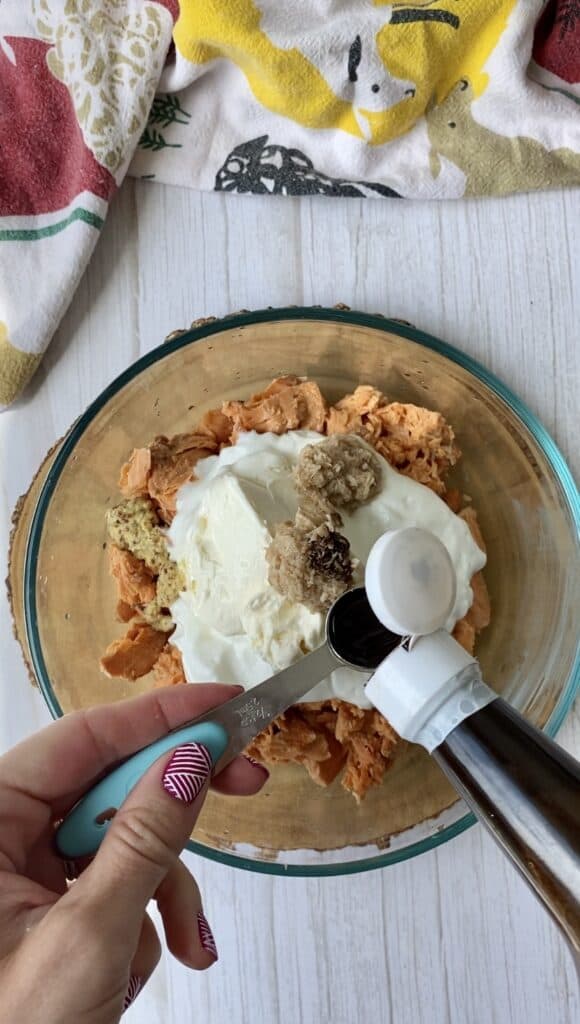
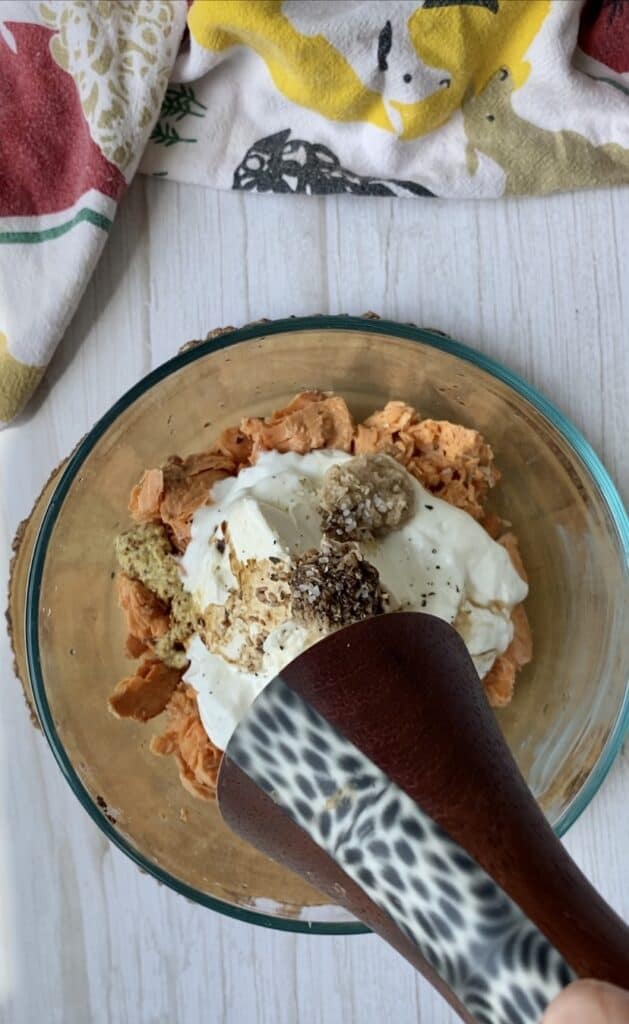
4. Add freshly squeezed lemon juice and stir to combine. Taste the Salmon Pate to adjust seasoning. You might add a little more Kosher salt, pepper or a squeeze of lemon for your taste.
5. Use a fork to combine all ingredients until smooth. Transfer mix to a small glass bowl for serving. Garnish with fresh Italian parsley or chopped chives.

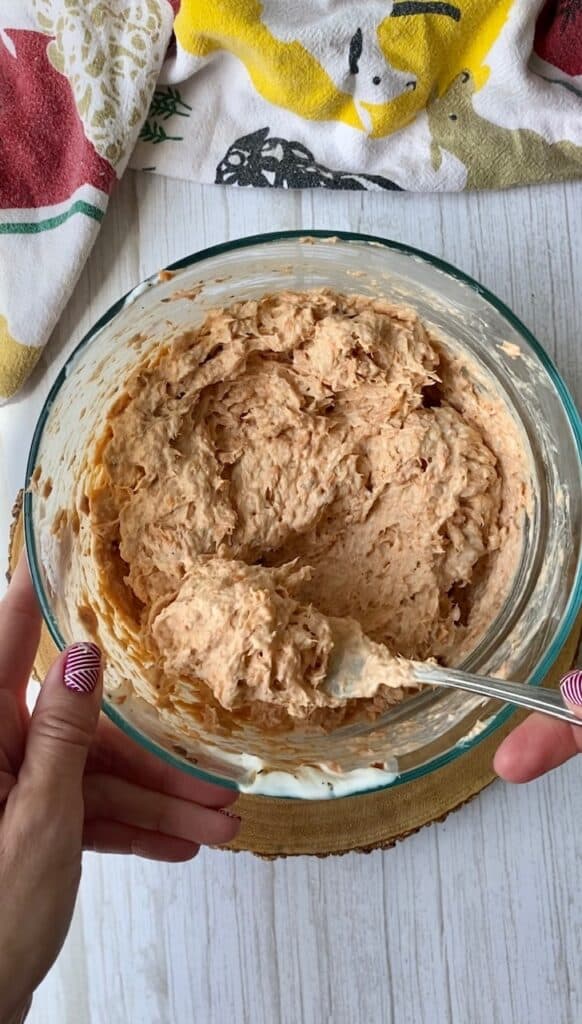

6. Allow your Salmon Pate to sit in the fridge for a minimum of 30 minutes or overnight to allow the flavours to intensify.
Serve Salmon Pate with:
- An assortment of crackers
- Fresh chopped veggies
- A charcuterie board
- Fill a wrap or sandwich bread with pate for a cold lunch. Add lettuce and shredded carrots.
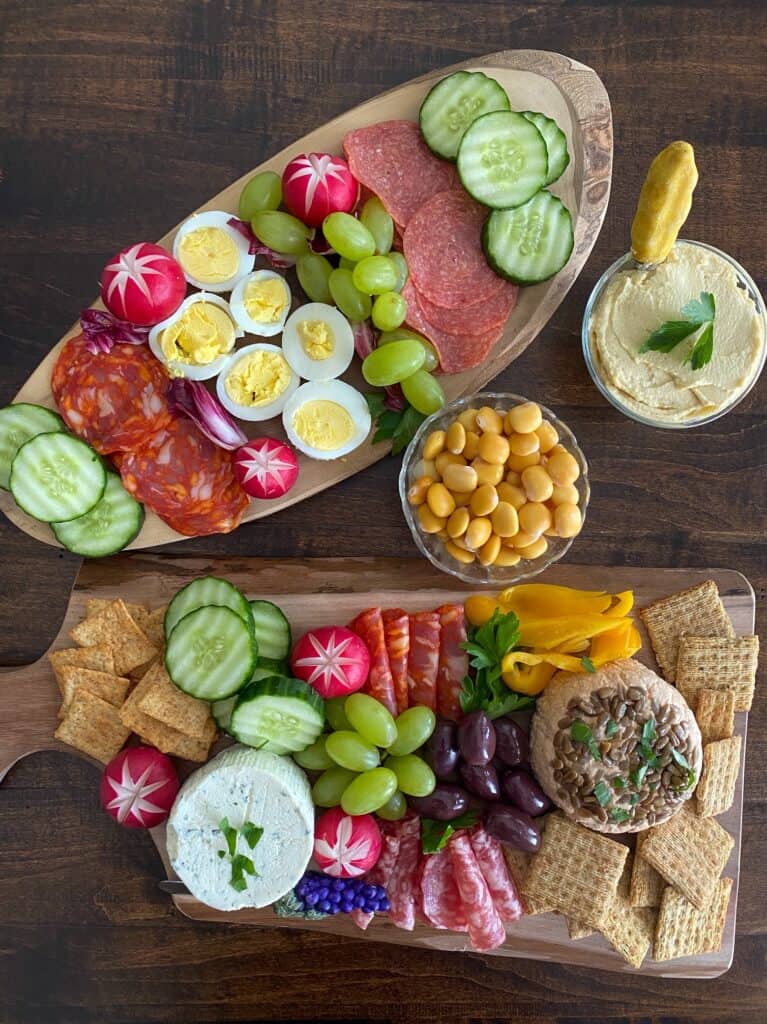
Why are Omega-3’s Important?
Omega-3’s are deemed “essential fatty acids” since our body cannot produce them and they must be consumed in food or supplements. The anti-inflammatory fatty acids DHA and EPA are the most biologically available, active forms, which come mainly from marine sources like fatty fish (salmon, trout, herring, mackerel, sardines) as well as algae (vegan source).
Omega-3 health benefits include:
- Lowers triglycerides (circulating fats in your blood) and can improve fatty liver by increasing fatty acid oxidation and lowering the liver’s conversion into fats (ref).
- Improves cholesterol by lowering the production of a ‘bad cholesterol’ (very-low-density lipoprotein (VLDL), which is more prone to oxidation and building up in the arterial walls, leading to cardiovascular disease. Can also increase the ‘healthy’ or high density lipoprotein (HDL), by about 12%, which removes fat from liver.
- Helps lower blood pressure according to a recent report from the American Heart Association.
- Improves insulin resistance, which is important for blood sugar control for those with pre-diabetes, diabetes and gestational as a risk factor for cardiovascular disease. Be sure to book with one of our Certified Diabetes Educator dietitians for personalized guidance.
- May improve mild-to-moderate depression (particularly EPA fatty acid) and may improve postpartum depression.
- During pregnancy, omega-3 fats support infant and maternal immunity as well as baby’s brain and eye development.
- Specifically DHA works synergistically with choline (important during pregnancy and lactation) for supporting baby’s memory, cognition and brain health.
- Supplementing mom with omega-3’s during breastfeeding appears to potentially help children perform better on sustained attention tasks at 5 years of age compared to non-supplementing mothers.
- Finally, if mom doesn’t have sufficient omega-3’s in diet, baby will deplete mom’s stores to support brain growth and development.
- May help reduce pain, improve morning stiffness and joint tenderness for people with rheumatoid arthritis.
What are Dietary Omega 3 Requirements?
Health Canada and Canada’s Food Guide recommend adults and those over two years consume at least two to three servings of fish per week. For adults, one serving is equal to 75 grams or 2 ½ ounces or about a half a cup of cooked fish. Additionally, emphasizing consumption of fatty fish like salmon, trout, herring, mackerel, sardines is recommended as these types are higher in omega 3’s. They provide the equivalent of 300 to 500 mg of EPA and DHA fatty acids daily (or approximately 2,100 to 3,500 mg of omega-3’s per week), which is consistent with the amount that the World Health Organization recommends.
Not sure if you’re getting enough Omega-3’s?
It’s important to note that higher omega-3 amounts are often needed for those at risk for heart disease, high triglycerides, fatty liver and during periods of development such as pregnancy and breastfeeding. There may also be benefit to higher doses for depression and inflammatory health conditions. Finally, be sure to speak with your Registered Dietitian for the amounts that are right for you.
More Salmon Recipes?
Bruschetta Salmon in Parchment Paper
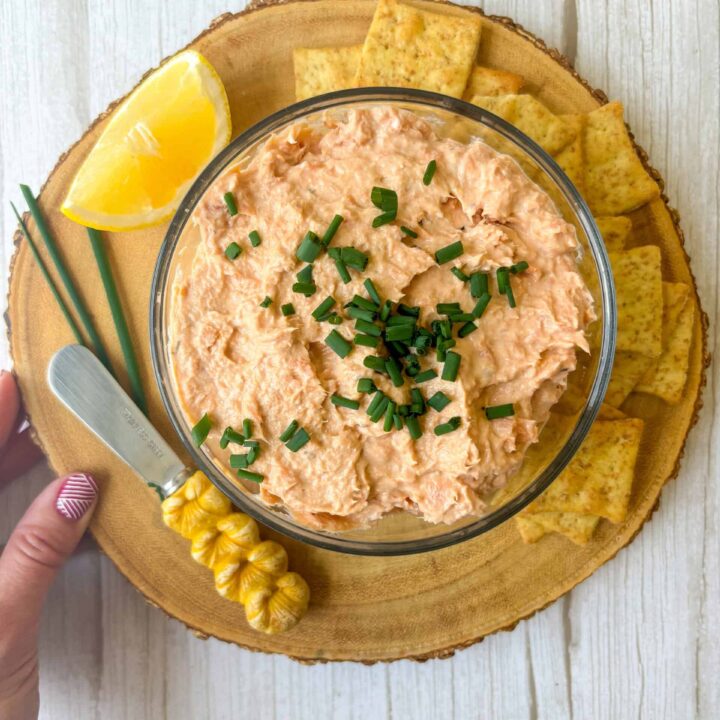
Salmon Pate
Salmon Pate is a flavourful appetizer or filled in a sandwich or wrap.
Ingredients
- Two (213 gram) cans of canned salmon, drained
- ½ cup (4 oz) Greek Yogurt (2%)
- ½ cup (4 oz) Cream cheese, softened
- 1 tbsp lemon juice
- 2 tsp horseradish
- 1 tsp dijon mustard
- ¼ tsp worcestershire sauce
- Salt and Pepper to taste
Instructions
1. Drain salmon and remove skin and large bones. Place in a medium-sized glass bowl.
2. Add in all ingredients and mix well with a fork until smooth consistency.
3. Taste test and adjust for Kosher salt and pepper or fresh lemon.
4. Place in a small bowl and garnish with fresh chives or parsley.
5. Let sit in the fridge for 30 minutes or overnight to allow flavours to intensify.
6. Serve with crackers and veggies for a snack/appetizer or on a tortilla or sprouted grain bread for lunch.


